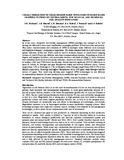| dc.contributor.author | Macharia, JM | |
| dc.contributor.author | Kimani, SK | |
| dc.contributor.author | Kimenye, LN | |
| dc.contributor.author | Nyikal, RA | |
| dc.contributor.author | Ramisch, J | |
| dc.contributor.author | Esilaba, AO | |
| dc.date.accessioned | 2015-07-22T16:22:24Z | |
| dc.date.available | 2015-07-22T16:22:24Z | |
| dc.date.issued | 2004 | |
| dc.identifier.citation | Agricultural research for improved productivity and livelihood proceedings of the 9th biennial scientific conference, Kenya Agricultural Research Institute Headquarters, Nairobi (Kenya).- Nairobi (Kenya): Kenya Agricultural Research Institute, Nairobi (Kenya), 2006. 9th Biennial Conference, 9, Kari Headquarters, Kaptagat Road, Loresho, Nairobi, (Kenya), 8-12 November 2004.- 9966-879-67-6.- p.621-625, p. 621 | en_US |
| dc.identifier.uri | http://www.kalro.org:8080/repository/handle/1/64 | |
| dc.identifier.uri | http://hdl.handle.net/11295/88624 | |
| dc.description.abstract | In recent years, integrated soil fertility management (ISFM) paradigm has emerged as the best
strategy for different resource-poor smallholders to mitigate problems of food insecurity and poverty.
This makes characterisation and evaluation of ISFM technologies under different socio-economic
and biophysical farmers’ circumstances imperative. The study examined how local and technical soil
quality indicators (LSQI and TSQI) could be used to delineate farmers in maize-based cropping
systems of central Kenya into different inter-farm recommendation domains. Depending on levels of
organic and inorganic fertilizers, soil conservation structures and depth of tillage, 3 classes of farmer
were identified, based on local soil quality indicators. Analysis of variance (ANOVA) was employed
to validate LSQI- and TSQI-based classification. Results depicted significant (P<0.05) differences in
mean % Carbon, % Nitrogen and ppm Phosphorous within and between different classes. Carbon
ranged from 1.4% in Kirinyaga to 2.1% in Maragwa, while Nitrogen ranged from 0.06-0.17% in two
districts respectively. Kirinyaga had highest Phosphorous levels (649 ppm) while Maragwa had the
lowest (45 ppm). This could help develop more targeted ISFM technologies to suit different
recommendation domains, for more productivity in smallholder agro-ecosystems. | en_US |
| dc.language.iso | en | en_US |
| dc.subject | Integrated Soil Fertility Management (ISFM) | en_US |
| dc.subject | Nutrient Depletion, Food Security | en_US |
| dc.subject | Local and Technical Soil Quality Indicators (LSQI and TSQI) | en_US |
| dc.subject | Recommendation Domains | en_US |
| dc.title | Characterization Of Smallholder Farm Typologies In Maize-Based Cropping Systems Of Central Kenya: Use Of Local And Technical Soil Quality Indicators | en_US |
| dc.type | Presentation | en_US |
| dc.type.material | en_US | en_US |

